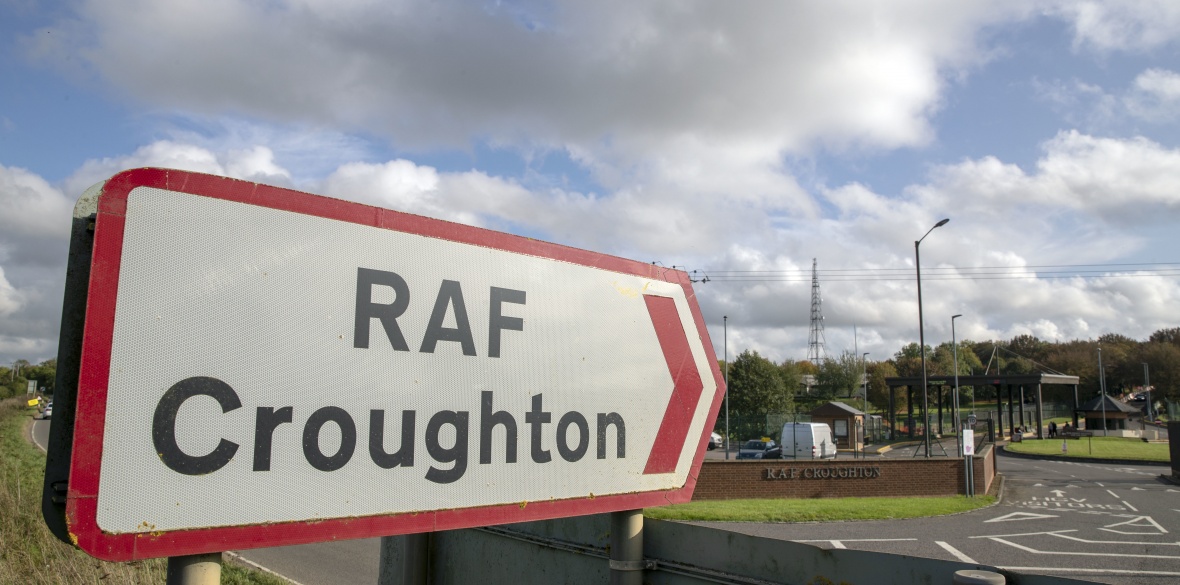This is the last article you can read this month
You can read more article this month
You can read more articles this month
Sorry your limit is up for this month
Reset on:
Please help support the Morning Star by subscribing here
THE news about the diplomatic status of the US citizen Anne Sacoolas has concentrated on the campaign of the parents of Harry Dunn, a 19-year-old British man who died following a road traffic collision on August 27 outside the secretive US air force base at RAF Croughton.
What has received less attention in the mainstream media is the nature of the operations at RAF Croughton, the secretive aspect of her husband’s work and the way Britain is being used as Washington’s forward Atlantic military base.
RAF Croughton is in fact run by the US air force and is patrolled by armed US marines.
It is one of 23 US air force bases in the UK which have continued to operate since the end of World War II when the US ceased bombing operations against nazi Germany.
Some bases were built specifically to accommodate US bombing squadrons in the east of England to enable them to reach targets deep inside Germany during WWII and then used by nuclear-armed bombers ready to attack the Soviet Union during the cold war in the 1950s.
The US air force station is a major hub for US military and clandestine communications under the control of the National Security Agency (NSA).
Other sites include the notorious Menwith Hill in Yorkshire and seven others across the UK.
In July 2013, German Chancellor Angela Merkel defended the surveillance practices of the NSA, and described the US as “our truest ally throughout the decades.”
However a few months later when it was discovered the US had bugged her mobile phone the Chancellor attacked the US and compared the NSA with the Stasi, and received a grovelling apology from president Barack Obama.
The 2017 Office of the Inspector General report recorded that the base provided command, control, communications and computer support to Department of Defence and civilian agencies across Europe, and was staffed by about 265 US military personnel, 140 Department of Defence civilians and 200 British Ministry of Defence employees.
It provides about 25 per cent of all European to United States military communications.
In the post-second world war years, the United States Strategic Air Command (SAC) was based at three major airfields in eastern England: RAF Lakenheath, RAF Marham and RAF Mildenhall.
SAC then moved to RAF Greenham Common, RAF Brize Norton, RAF Upper Heyford and RAF Fairford.
RAF Mildenhall, for example, was responsible for operations of four Boeing EC-135H Flying Command Posts of the 10th Airborne Command and Control Squadron, which would have been responsible for US SAC command and control in the event of a nuclear war with the Soviet Union.
Those aircraft were used to fly spying missions along the borders of Poland, the Soviet Union and Czechoslovakia, monitoring and recording military communications.
Also at Mildenhall, Lockheed SR-71 Blackbirds from the 9th Strategic Reconnaissance Wing were deployed on a routine basis.
The SR-71s at Mildenhall were supersonic aircraft involved in high-altitude spying missions to record data from Soviet rocket systems.
Electronic gathering flights were primarily aimed at gathering signals from the Soviet missile centre at Plesetsk. This information, along with information being gathered from spy satellites, enabled the US to closely monitor Soviet activities.
SR-71s at Mildenhall also played a key role in the 1986 bombing of Libya.
On the orders of then president Ronald Reagan the bombers took off from another US air force base, RAF Lakenheath in Suffolk, eventually killing 60 people.
In the late 1970s as anti-Soviet hysteria was whipped up by British and US media, Nato under the control of the US decided to make further use of Britain as its very own front-line military base against communism.
It decided to deploy new cruise missiles across Europe. Britain’s share of this was 160 missiles, 96 based at Greenham Common with four spares, and 64 at RAF Molesworth.
When in June 1980 it was announced that RAF Greenham Common was to become the first site for cruise missiles, the Campaign for Nuclear Disarmament began a long protest campaign.
When the base received its weapons in November 1983 it was met by the famous Greenham Common women’s peace camp protesters.
The camp began in September 1981 after a Welsh group, Women for Life on Earth, arrived at Greenham after a long march to protest against the decision of the Thatcher government to allow cruise missiles to be deployed there.
After realising that the march alone was not going to exert enough pressure to have the missiles removed, many women began to stay at Greenham to continue their protest.
The first blockade of the base occurred in March 1982 with 250 women protesting, during which 34 arrests were made.
The camp was active for 19 years, involving several acts of trespass and eventually overseeing the removal of cruise missiles in 1991.












